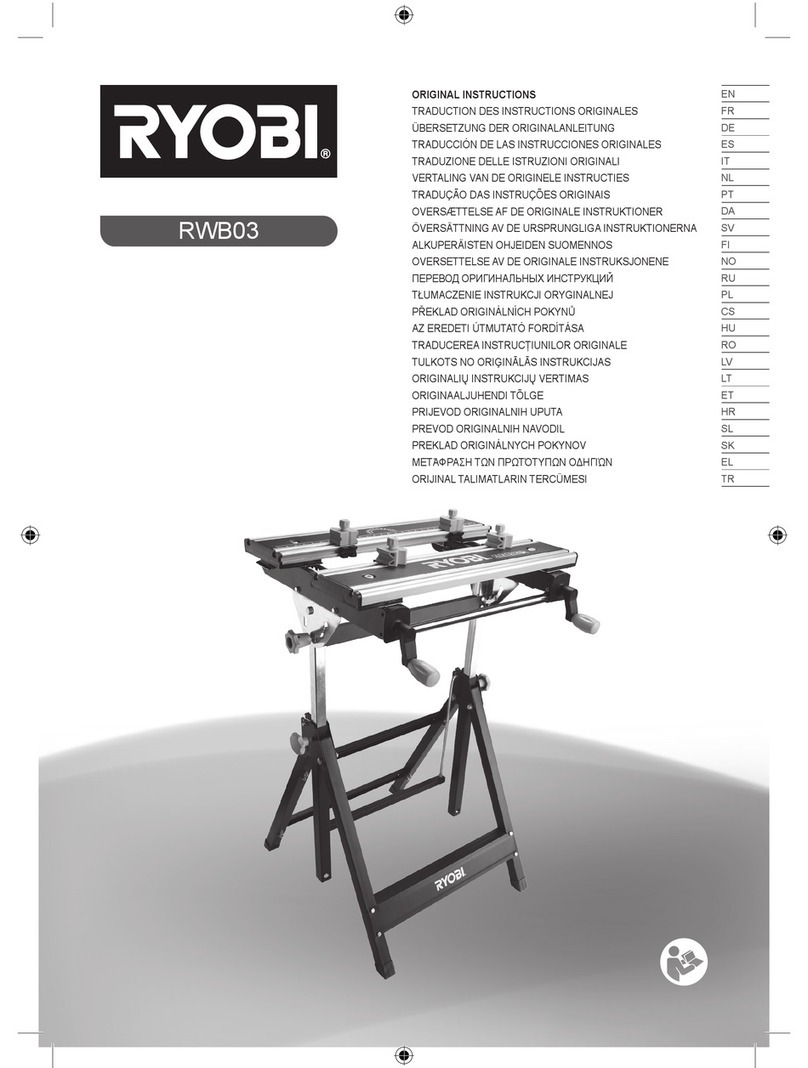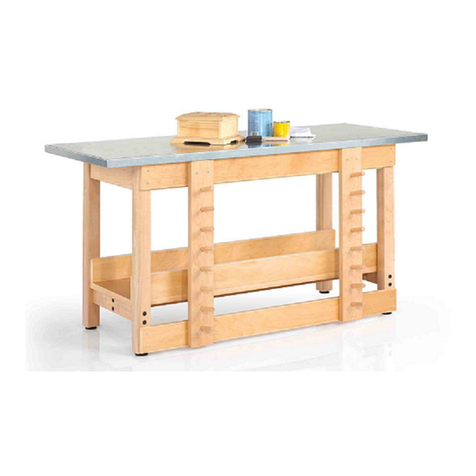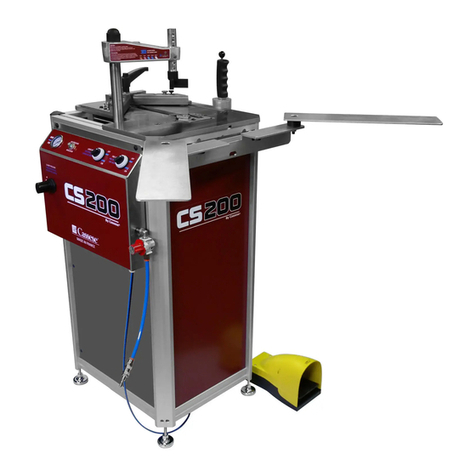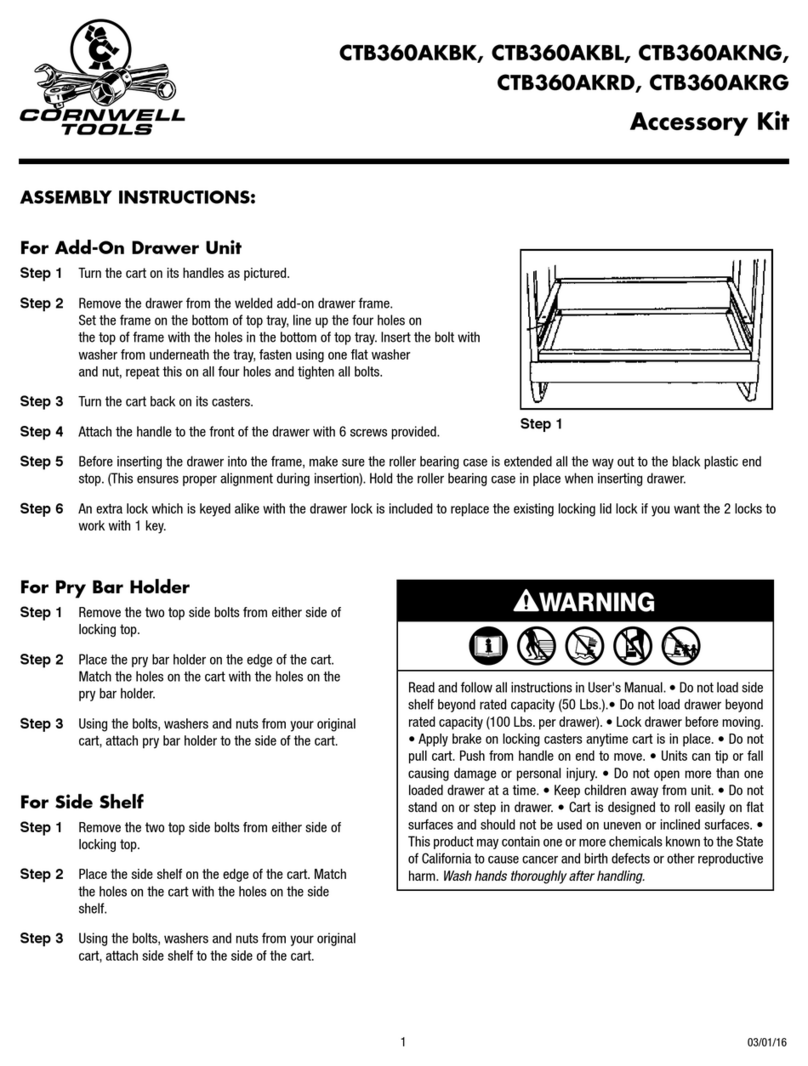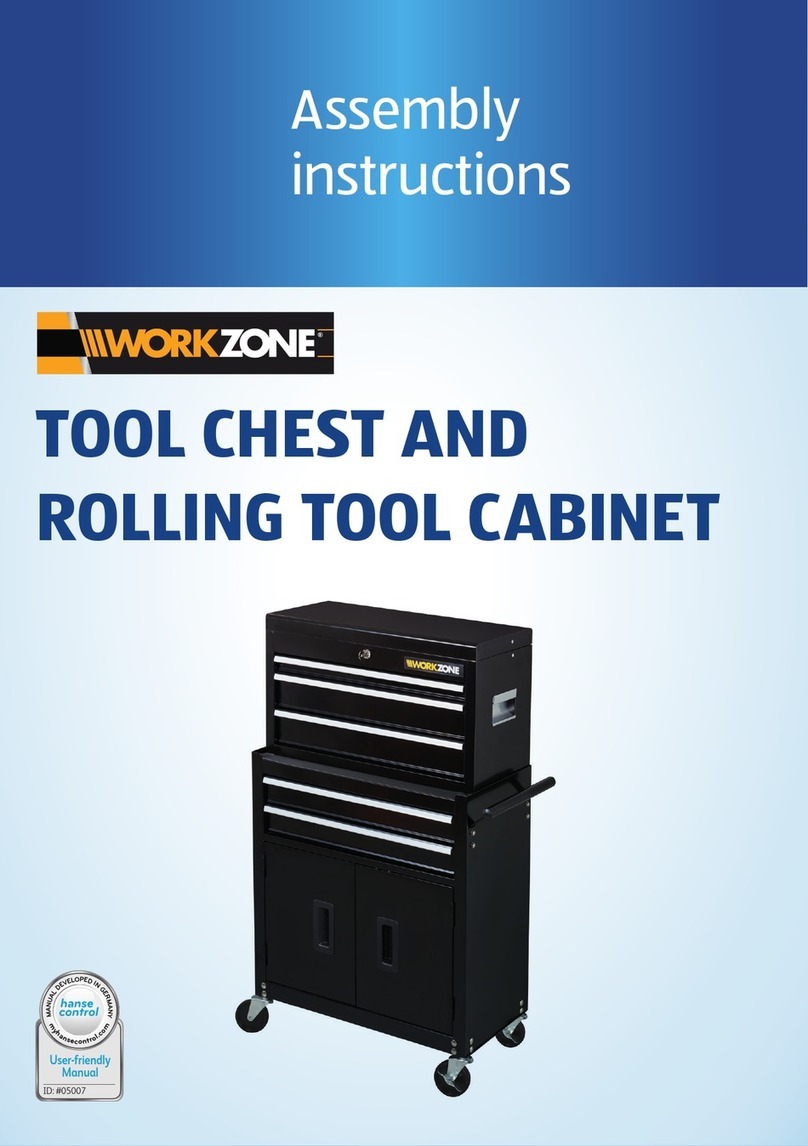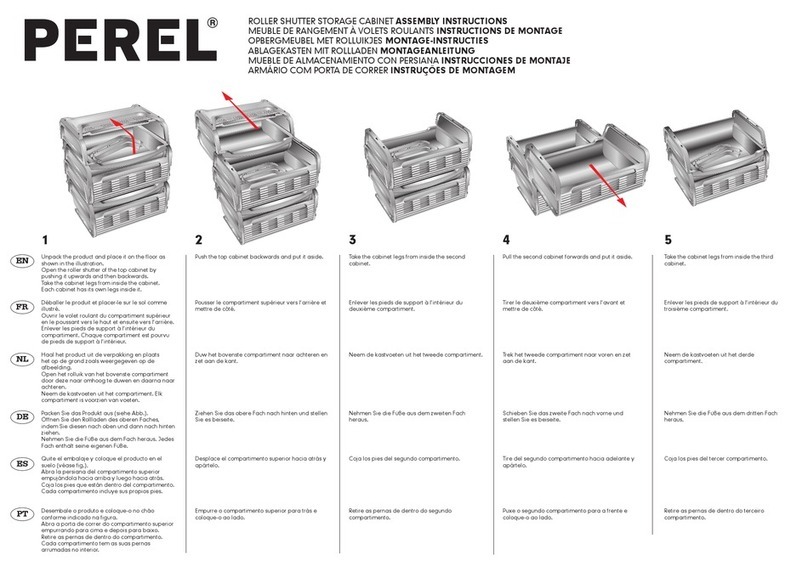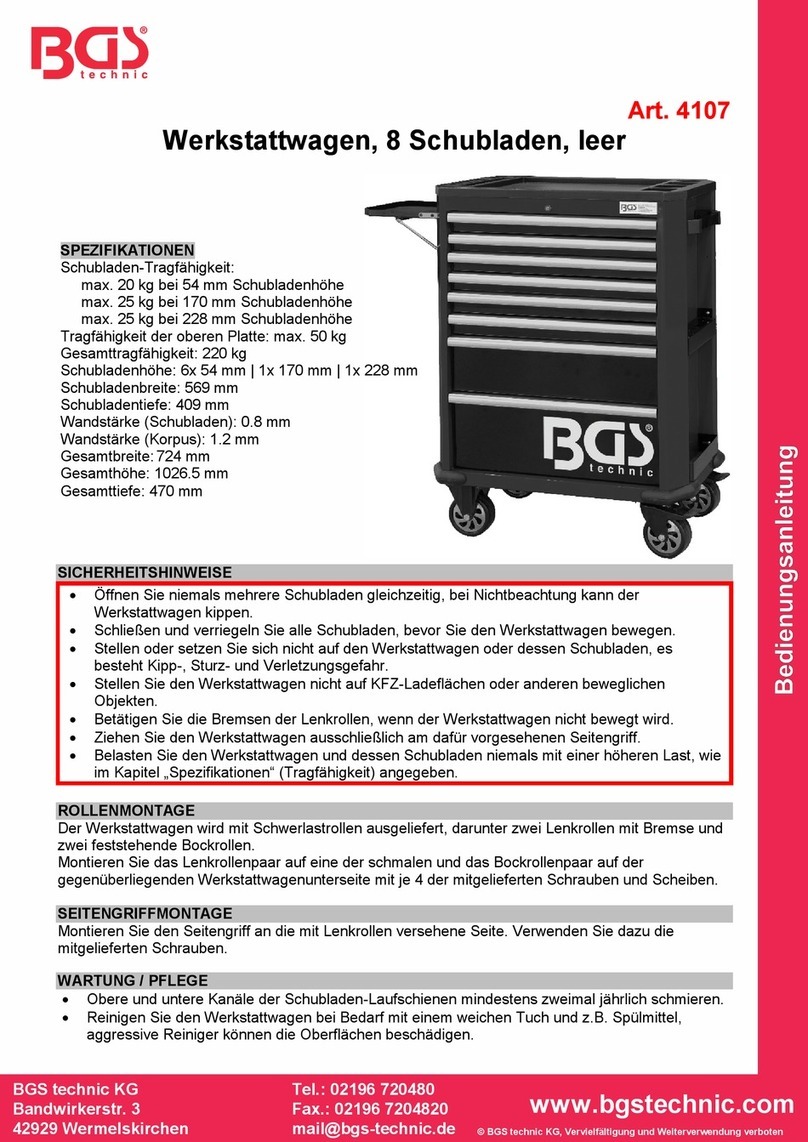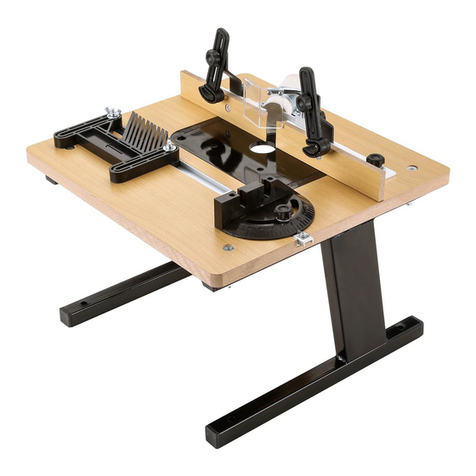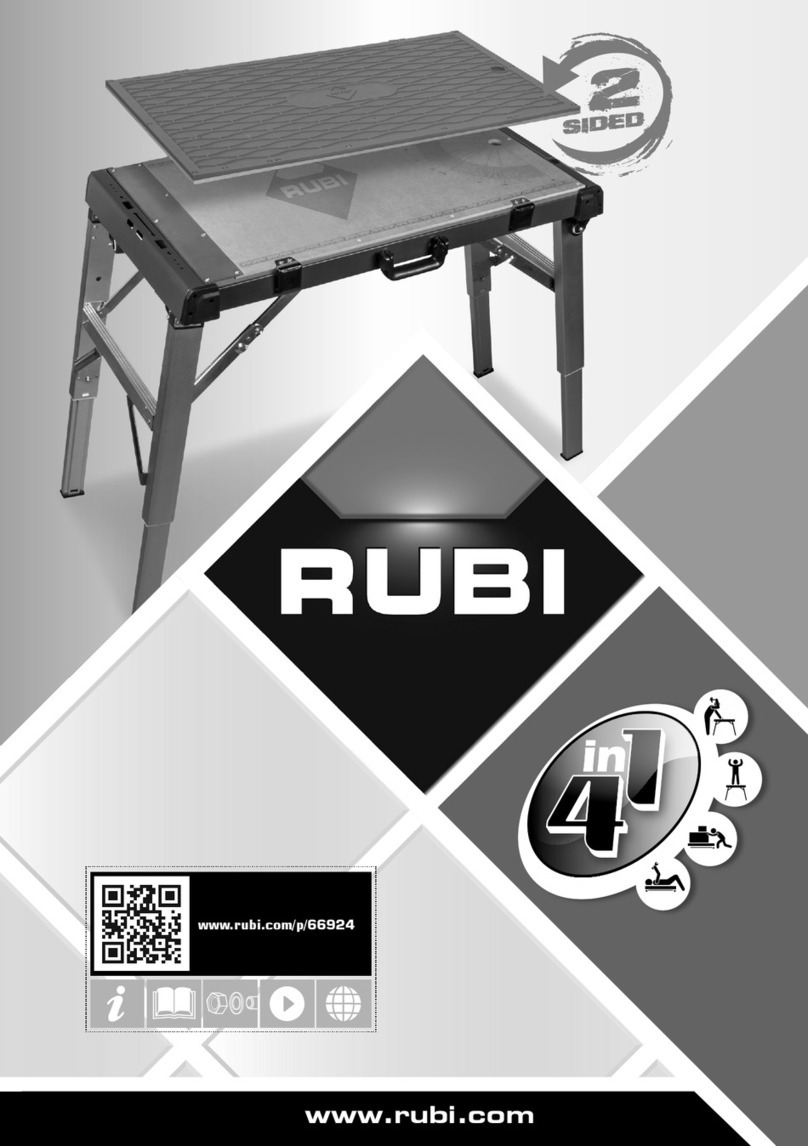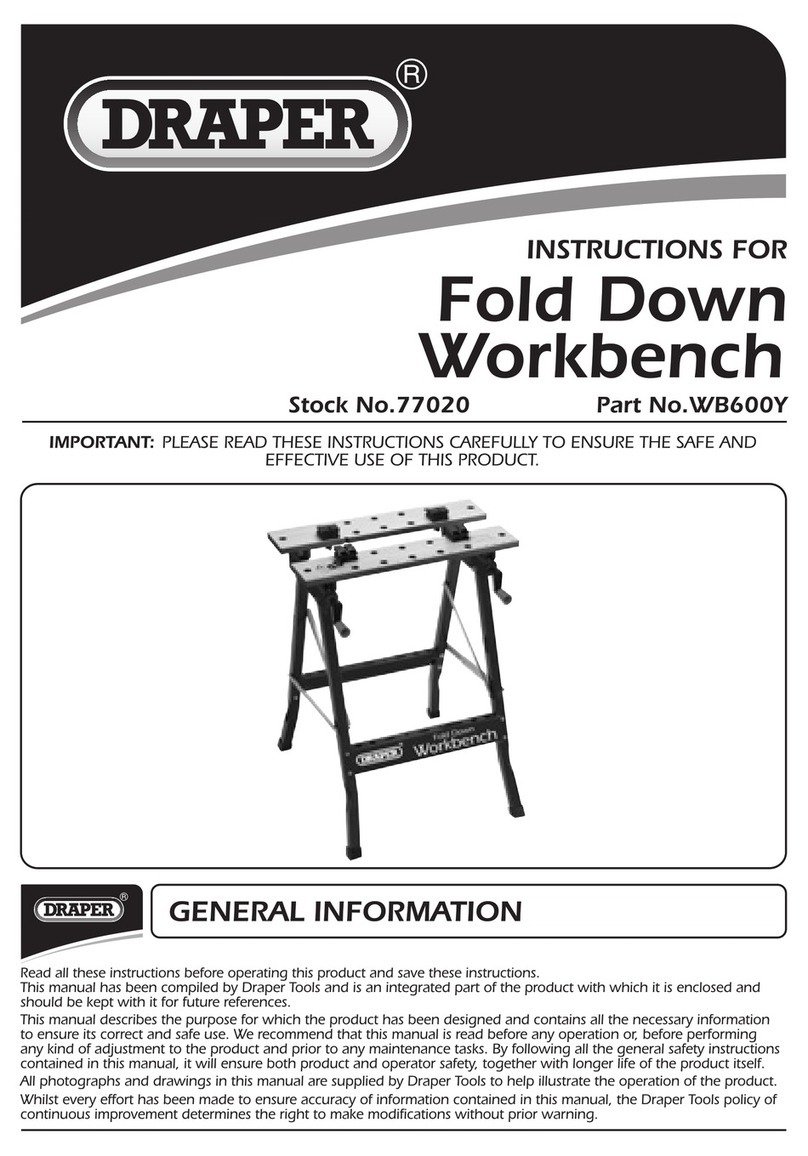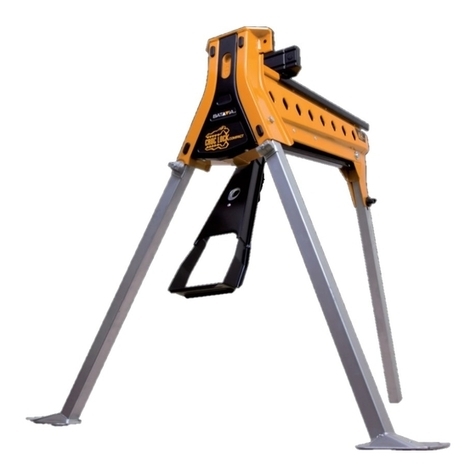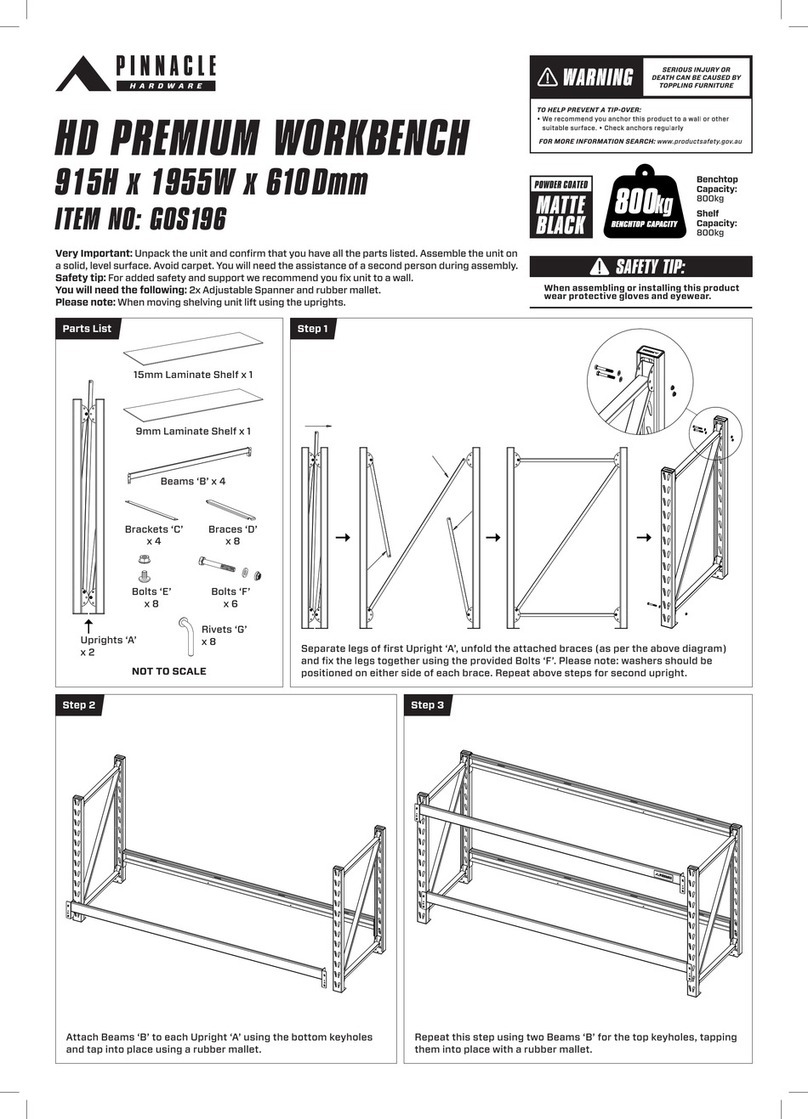Assembling the Workbench
2
Large countersunk
holes face inward.
Medium pilot holes
face outward.
Secure the bolts that
are closest to the
corners first.
Make sure the edges
of the legs are flush
with the frame.
Small holes on
edges face
ends of table.
2. Use 2 bolts, 2 washers, and 2 nuts
to secure each leg. You may want
to use an adjustable wrench for
steps 2 and 3.
Note: Tighten the bolts only until snug. You will tighten them
completely when all the bolts and screws are in place.
1. Set the tabletop upside
down and position the
legs as shown.
Early Years Workbench
With built-in storage for tools—and a handy measuring guide printed
on the surface—this sturdy table is ideal for any woodworking project!
Instructions for assembling the workbench are in this guide. You’ll need
a Phillips screwdriver and a standard screwdriver with a thick, wide head.
A 7⁄16" socket wrench will make the job easier, but is not essential. You
will also need a hammer and nail to make pilot holes.
Before you begin, check the list of hardware and components to make
sure you can identify the pieces. You may also want to have an adjustable
wrench handy during assembly.
What’s Included
©2008 Lakeshore LC104
(800) 428-4414 Ages 3+
www.lakeshorelearning.com
bolts (16)
nuts (16)
screws (26)
table top bottom shelf
legs (4)
short braces (2)
vise
saw holder
long braces (2)
washers (16)
saw holder
screws (2)
hardware cup
Hardware


